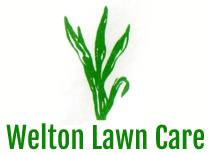Learn More About Our Effective Lawn Treatments
Our philosophy is to never waiver from a culture of high integrity, quality service, customer care, and responsiveness.
Lawn Fertilizing and Weed Control
- Our environmentally responsible, lake-safe annual lawn care program is designed to wake up your lawn in the spring to become green, continue to promote a thick, green, healthy, weed-free lawn that you’ll enjoy all season long, and prepare your lawn to store nutrients for maintained root health all winter long.
- Spring: Granular fertilizer for spring root development with pre-emergent crabgrass control
- Late Spring: Granular fertilizer with pre-emergent crabgrass control and weed killer
- Early Summer: Granular fertilizer with a weed killer, including hard-to-control weeds (such as clover and violets), and Merit Grub Control
- Mid-Summer: Slow-release granular fertilizer with a weed killer, including hard-to-control weeds (such as clover and violets)
- Late Summer: Same as Mid-Summer
- Fall: Granular winterizer fertilizer to store nutrients during the winter for root development and faster green-up in the spring
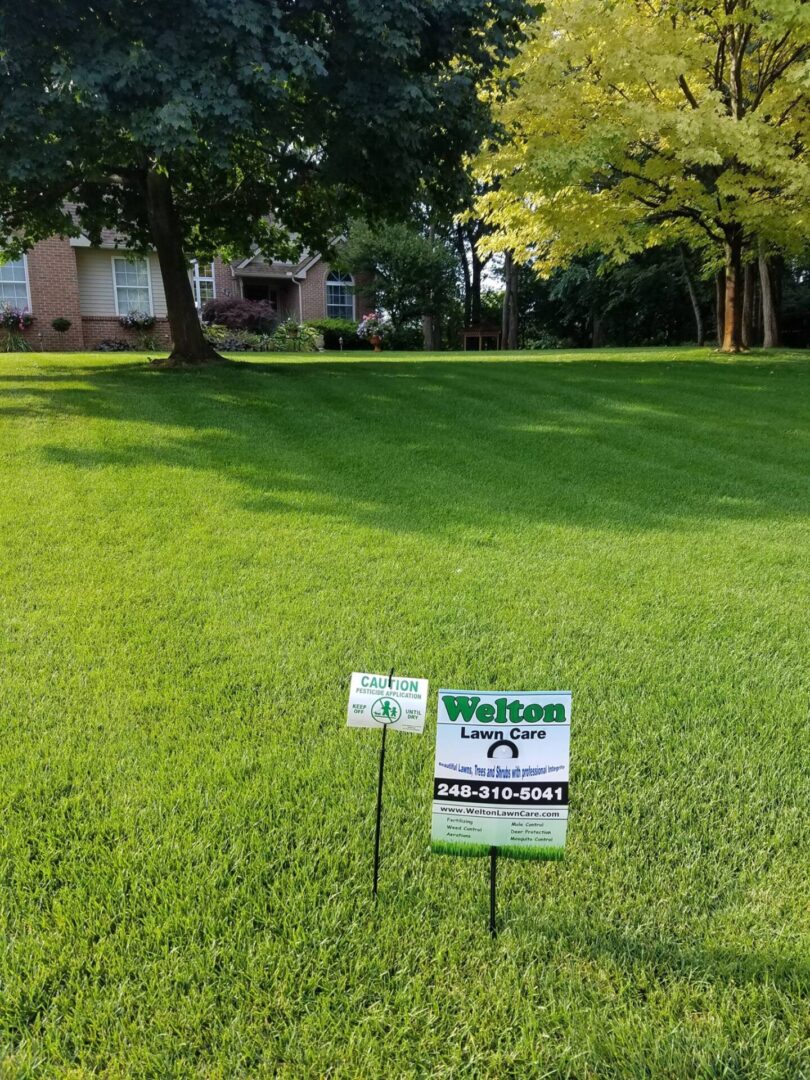
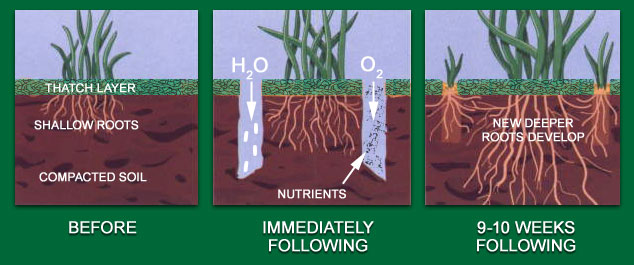
Aeration and Overseeding
- Core aeration loosens compacted soil allowing air, water, and nutrients to stimulate a deeper and healthier root system.
- Overseeding replenishes the life cycle of grass that is already established.
- Both promote thicker turf density for a stronger, more vigorous lawn.
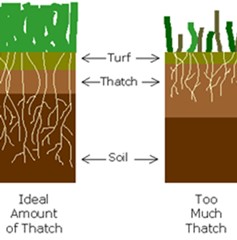
Organic Thatch Control
- Excess thatch builds up over time and can starve and suffocate grass, promoting an unhealthy and unsightly lawn more susceptible to disease and drought.
- Organic Thatch Control offers a proven, environmentally safe, non-chemical alternative to remove excess thatch quickly without the invasiveness of mechanical de-thatching, allowing water, nutrients, sunlight, and air to reach the roots of the grass while increasing drainage and promoting a much healthier lawn.
Lawn Disease Control
- Red Thread and Dollar Spot are common examples of lawn fungi appearing as irregularly shaped pinkish or tan circular patches which can spread. It tends to occur from spring to late fall, especially after extreme and often moist weather.
- Lawn fungal diseases are cosmetic, and your turf should recover. The diseased parts of the plant will grow out and be removed as you mow. Persistent patches may require specific attention, and although a fungicide will not treat the root cause, it will help to stop the disease from getting worse until the conditions causing it change.
Moisture Manager
- Root zone moisture manager that effectively reduces
the overall watering requirements of lawns.
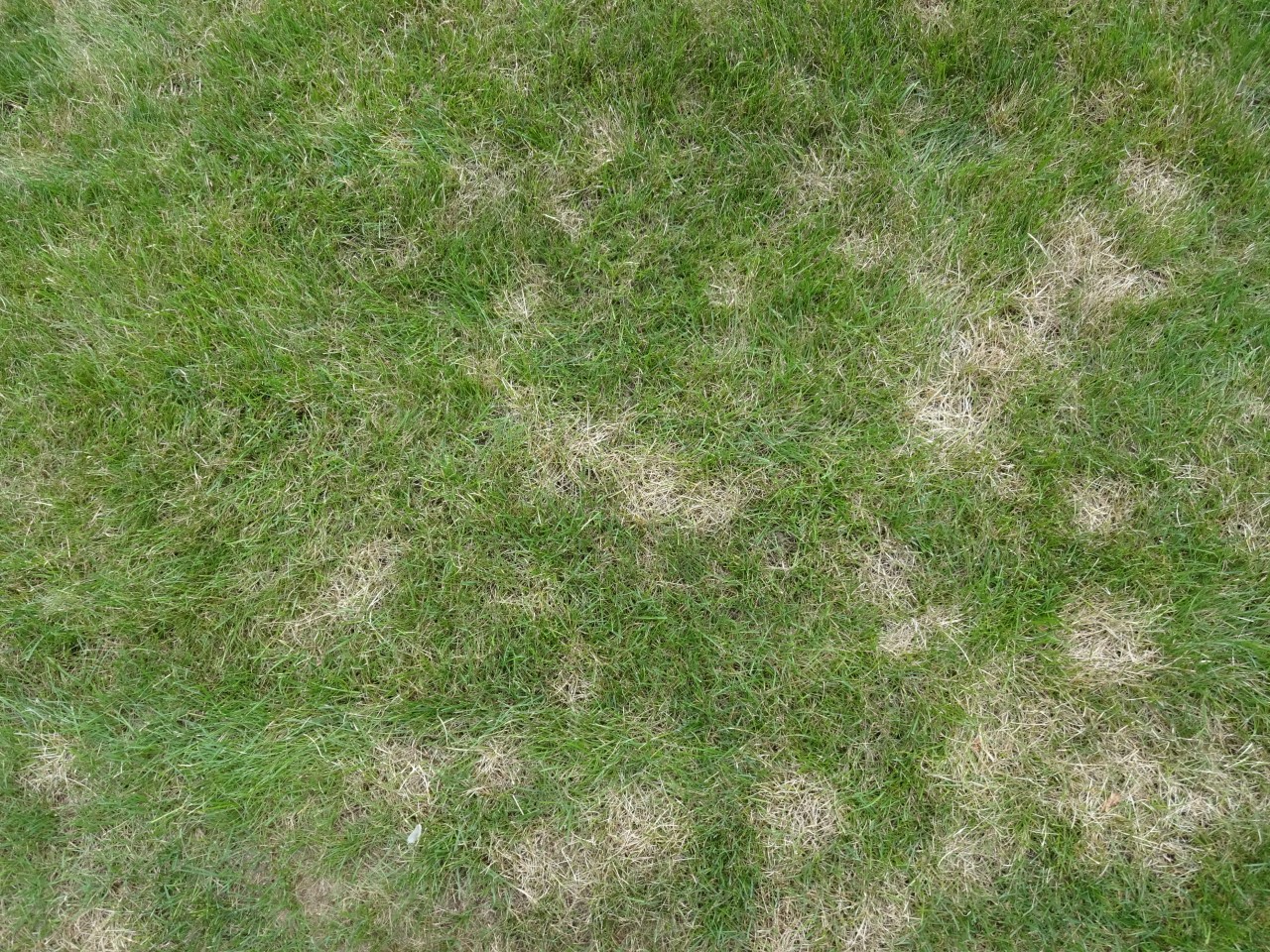
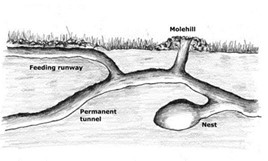
Mole Control
- Moles appear quickly, leaving hills or ridges from tunneling. Moles are insectivores, not rodents. Their primary food source is earthworms. They don’t eat plants but uproot the soil exposing the roots.
- Roughly the size of chipmunks and with a high metabolism, they eat up to 80% of their body weight per day. Moles can dig 10-20 feet per hour and quickly colonize. They are active day and night, year-round, especially in the spring and fall.
- One treatment guarantees existing mole eradication for 45 days. For chronic mole problems, a season-long program will guarantee the eradication of moles with follow-up treatments all season as needed.
